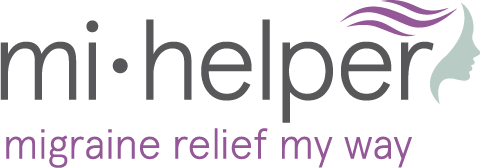By Marc Lallanilla – Read More
Published Aug. 1, 2023 | Updated Aug. 1, 2023, 5:02 p.m. ET
An innovative new treatment might soon help millions of people worldwide who suffer from migraines.
Researchers have used a device that delivers a stream of air to cool the nerves at the back of the nose, providing relief from migraine pain — sometimes within minutes.
The medical device, called a CoolStat transnasal thermal regulating device, can cool a bundle of nerves called the sphenopalatine ganglion, or SPG.
The SPG, which is located behind the nose, sends pain signals to the brain and is implicated in many migraine attacks.
The new procedure could help many migraine sufferers who aren’t getting relief from migraine symptoms with their current therapies.
“Migraine is very individualized, and so while we have a lot of effective migraine treatments available now, many patients may still not be getting adequate relief,” Dr. Anna Pace, assistant professor of neurology at Mount Sinai Health System, told The Post.
For people with severe migraine pain, doctors can perform an SPG block by injecting a numbing anesthetic through the nose into the SPG nerves.
But that procedure has risks including nose bleeds, low blood pressure, nausea and lightheadedness, and the pain relief is only temporary, lasting a few weeks in some cases.
With that in mind, medical experts at Michigan State University, the Mayo Clinic Scottsdale and Atrium Health Neurosciences Institute in Charlotte, North Carolina, ran a trial to see if cooling the SPG nerves with the device would relieve migraine pain quickly and safely.
They chose 24 study participants with frequent migraines who were told to report to a medical center as soon as they felt a migraine coming on, a period of time sometimes referred to as the “prodrome” or pre-headache phase.
They were then given a 15-minute treatment with cool, dry air from a CoolStat device and, after two hours, participants were asked how their levels of migraine pain had changed.
An impressive 88% of the participants who received 6 liters of air per minute reported pain relief after 2 hours, and 44% of them reported freedom from pain.
Participants who received more liters of air per minute reported pain relief but also noted more discomfort during the CoolStat procedure.
“[T]his treatment could be a potential useful rescue treatment for acute migraines, and it seems to be well tolerated,” Pace said, noting that the procedure could be used in addition to medication or other treatments.
“In general a multimodal approach to migraine management is crucial to achieving effective relief and improving quality of life for patients with migraine,” Pace added.
“Transnasal cooling at lower flow rates was effective and tolerable for treating acute migraine attacks,” wrote the authors of the study, which has not yet been published. The research was presented at the 65th Annual Scientific Meeting of the American Headache Society.

Despite the study’s positive results, some experts question whether the treatment will have any real-world benefits anytime soon.
“The results are encouraging and this is a simple approach with little potential for unwanted side effects,” Dr. Andrew Dowson, clinical lead at NHS East Kent and Bromley Headache Services in the UK, told the Daily Mail.
“But at the moment, the number of patients it’s been tested on is too small to show proof of effect,” Dowson added.
Migraines, a common neurological disorder, cause a throbbing or pulsing headache, usually on one side of the head, according to the Cleveland Clinic.
They often get worse with physical activity, lights, sounds or smells, and some migraines last a few hours; others can last for days.9
About 12% of Americans have the disorder, and research shows it’s the sixth most disabling disease in the world.
There are a number of treatments for migraines, including over-the-counter medications and prescription drugs including antidepressants, beta blockers and steroids. Other therapies include biofeedback, yoga, massage and meditation.
